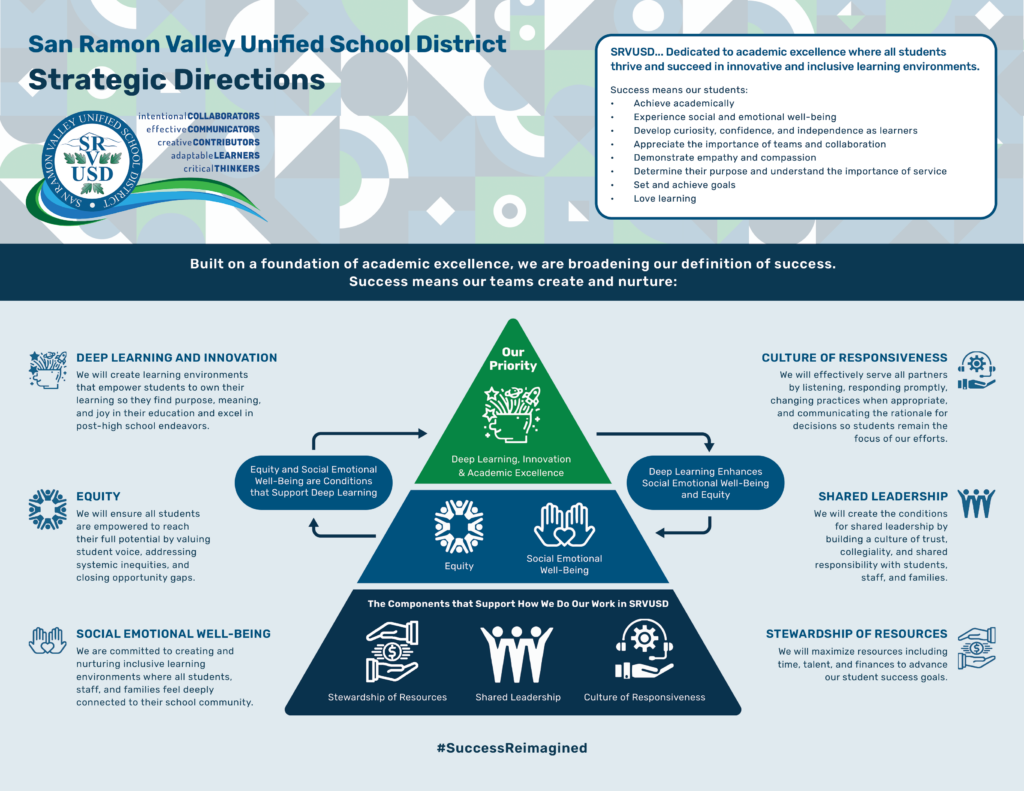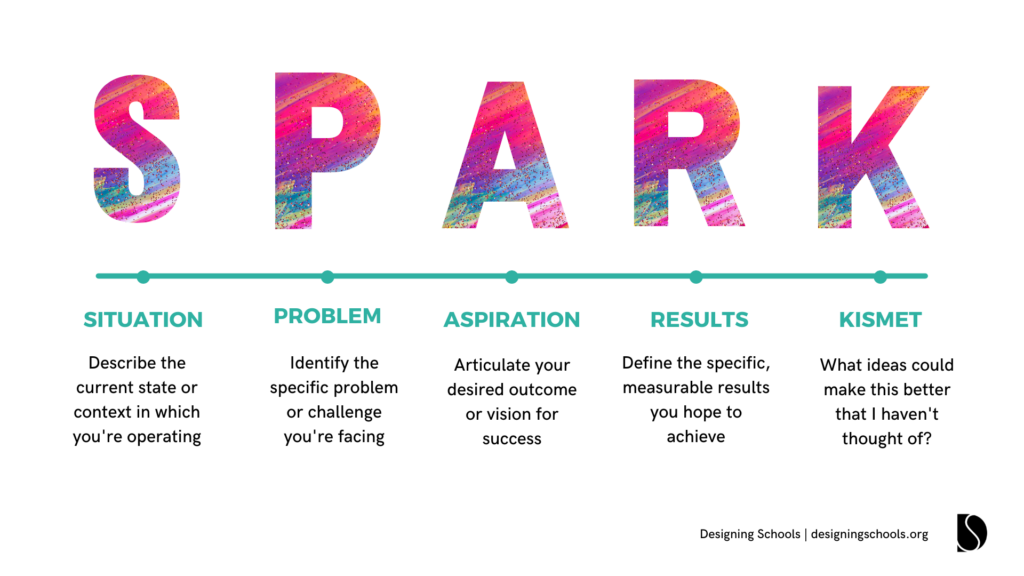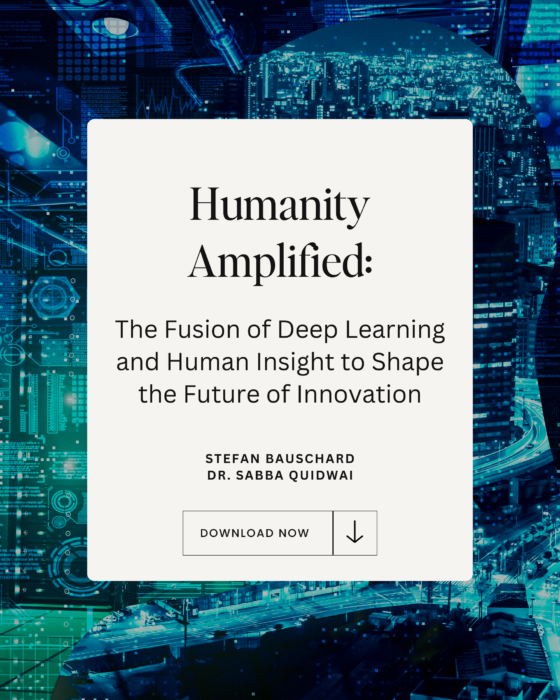By: Sabba Quidwai, EdD and Stefan Bauschard
The brief departure and return of Sam Altman as CEO of OpenAI underscored the need for stable, trust-based leadership in the rapidly evolving AI sector. This episode, not rooted in technological or financial challenges, highlighted how the absence of a strong, value-aligned culture can destabilize even a leading $90 billion tech enterprise.
There’s a valuable reminder for all of us as we reflect on these events.
A culture of innovation should not depend on any one company; rather we need an approach to integrating emerging technologies into our organizations using a systems approach that prioritizes the interests of the community.
Critical to this culture of innovation is developing lifelong learners, who can critically evaluate ideas and trends, and use their analytical skills to think creatively about the future in collaboration with others. Central to this approach is the concept of deep learning, a principle that manifests distinctively yet interdependently in AI and education, and it forms the basis of our approach to learning and teaching.
This paradox highlights the need for agility in adapting, not reacting, to the rapid developments we’re seeing with AI. At Designing Schools, Stefan Bauschard and I have spent the past year working with organizations to examine AI integration using a design thinking approach to create a sustainable and scalable culture of innovation that begins with empathy, and incorporates deliberative decision-making centered around trust and alignment toward a shared vision.
Deep Learning in AI and Education
Since 2010, AI has seen rapid advancements due to the development of deep learning, and it’s no coincidence that the term is used in both artificial intelligence and education. In AI, deep learning refers to machines’ ability to learn and evolve from vast datasets, mirroring the complexity of human neural networks. In the educational sphere, it signifies a profound, experiential learning process where individuals delve deep into subjects, not merely to absorb information but to apply knowledge ethically and innovatively in real-world scenarios.
What binds these two facets of deep learning is the indispensable foundation of trust and shared values. In AI, trust ensures that the technology develops in a way that aligns with ethical standards and societal values, preventing misuse and guiding responsible innovation. In education, trust fosters an environment where learners feel safe to explore, question, and challenge, thereby cultivating their ability to make informed, ethical decisions in ever-changing circumstances
Deep Learning at San Ramon Valley Unified School District
San Ramon Valley Unified School District (SRVUSD), identified deep learning as integral to their learner profile. Their #SuccessReimagined initiative exemplifies the core qualities that help people develop skills, awareness and mindsets needed to thrive in an AI-world. Through this shared vision they have created a thriving culture of innovation built on trust and safety. It is important for today’s learners to not only use these technologies, but to engage in the process of deep learning as part of their educational journey so that when they are tasked with making essential decisions, whether they be personal or those that impact the world, they do so with effective communication and critical thinking skills, masterful collaboration, creativity, and character that reflects strong citizenship in the community. They cannot outsource their own abilities to do these things to AI. As a result, developing these skills and mindsets is essential to succeeding in a world driven by a rapid rate of change. These changes will continue to accelerate, not just in AI but in biotechnology, robotics, 3D printing, nanotechnology, renewable energy technologies, drone technologies, and quantum computing.

As education organizations plan for the 2024-2025 school year, here are three strategies to consider as you nurture a culture of innovation built on trust and safety where deep learning can thrive.
Strategy 1: Create with People, Not For People
Bringing the community together to share ideas, questions, and concerns, is one of the many reasons SRVUSD was able to accelerate their vision for deep learning. It’s why when examining AI integration in your organization, a key strategy we advocate for is the practice of empathy interviews. This approach validates how we design educational experiences, shifting from assumption-based to data-driven development.
Through empathy interviews, we directly engage with those for whom we are designing for. This engagement isn’t just conversation; it’s a gateway to discovering the real challenges, aspirations, and needs of our educational community.
I first learned this lesson a decade ago, while serving as Director of Innovative Learning at the University of Southern California Physician Assistant program, we were launching a 1:1 iPad program. We had been very focused on faculty training, however, our empathy interviews quickly revealed that faculty were incredibly optimistic, yet students did not want to learn a new technology, alongside content in their first year. As a result, we were able to redesign orientation and give every student a confident start to the program. At the end of the year, 98% of students said the iPad enhanced their engagement and understanding of content.
A decade later this approach is just as critical.
Our collaboration with the Orange County Department of Education illustrates the power of this strategy when leadership teams evaluate how best to support their community. We brought together a cross-functional team for a 3-day design sprint to answer, “How might we support schools to prepare K12 students in Orange County for a future shaped by AI?”
This collaborative effort focused on human-centered solutions to support education leaders during rapid technological changes based on their needs. One outcome was establishing a year-long cohort of district leadership teams cultivating a culture of belonging and psychological safety, identified by Harvard professor Amy Edmonson as critical to building a culture of trust.
By engaging in empathy interviews, we don’t just integrate new tools; we co-create ideas that lead to impact with the very people who will use and benefit from them. This approach has consistently led to more effective and meaningful integration that is human-centered and technology-driven.
Strategy 2: Create an AI Values Agreement and Framework that Aligns to Your Vision
The unfolding events at OpenAI have highlighted a crucial lesson for all of us: the imperative of aligning our technological advancements with our core values and vision. This alignment is not just a philosophical ideal but a practical strategy for fostering a sustainable and ethical culture of innovation.
Take, for instance, Santa Ana Unified School District. They have adopted a visionary statement: “Every graduate to be an architect of their life and learning, experiencing autonomy while persisting in the development of their life’s goals.” This powerful vision forms the cornerstone of their decision-making process and has empowered educators and students alike, fostering a sense of ownership and clarity in their educational journey. At a time when the arts are uncertain about their future in a world with AI, the Santa Ana Arts Department embraced being architects of their life and learning and turned challenges into opportunities by asking, “How might we…” a mindset they embraced from having spent the past two years immersed in design thinking practices.
Another exemplary model comes from Michigan Virtual. They have crafted an AI framework that the entire state’s educational system can adopt. This comprehensive framework encompasses three critical stages: investigating, implementing, and innovating. It covers a broad spectrum of areas, including Leadership & Vision, Policy Considerations, Instructional Framework, Learning Assessments, Professional Learning, Student Use of AI, Business & Technology Operations, and Outreach. What makes this framework so effective is its holistic approach, integrating AI into the fabric of educational strategy at every level.
The creation of an AI Values Agreement and Framework is more than just a procedural step; it’s a commitment to ensuring that every technological advancement we embrace is in service of our educational goals and ethical standards. It’s about ensuring that AI tools not only advance our capabilities but also resonate with our educational ethos.
For educational organizations looking to navigate the complex landscape of AI integration, developing such a framework is a crucial step. When we align our vision and our values we establish a strong criteria that grounds us in a rapidly changing world. It provides a clear roadmap for technology adoption, ensuring that AI serves as a tool for enhancement rather than disruption.
Strategy 3: SPARK Ideas for Using AI By Identifying Use Cases
In a world where AI’s speed and scale are both exhilarating and daunting, understanding its practical applications becomes crucial. Our SPARK method is designed to “prompt the human before you prompt the machine,” encouraging a human-centered approach to AI integration.

The cornerstone of SPARK is curiosity, collaboration, and experimentation. We encourage groups within educational organizations to come together, explore AI’s possibilities, and share their experiences. This collaborative process allows for a comprehensive understanding of where AI can be most effectively utilized and where it may not be suitable.
A prime example of this strategy is shared by Jenith Mishne, Director of Technology, at Newport-Mesa Unified School District. In early 2023, their high school educators engaged in a project to document their experiences with AI tools like ChatGPT. This initiative not only provided valuable insights into practical AI applications in an educational setting but also fostered a culture of innovation and continuous learning among educators.
Embracing a human-centered approach is key when deploying generative AI tools. As Don Norman shares, “A brilliant solution to the wrong problem is worse than no solution at all. Solve the right problem.” This philosophy is at the heart of our SPARK method, where we emphasize the importance of understanding and addressing the real needs of individuals before deploying technological solutions.
To enhance AI literacy and capacity, we have also collaborated with the San Bernardino County Office of Education. County Superintendent Ted Alejandre initiated the SPARK Your Leadership series, a program designed to equip district leadership teams with the skills to effectively navigate and lead in an AI-driven world. Bringing them together for a workshop series reinforced a culture of trust and collaboration. Creating opportunities for teams to have the time and space to reflect, critique, discuss, and learn with one another when dealing with a topic as complex as AI in education is essential. As Microsoft shared in a recent report, digital debt is costing us innovation as 68% of people say they don’t have enough uninterrupted focus time during the day to spend time on the creative work that leads to innovation.
The experience of Wichita Public Schools is a testament to the transformative power of AI when you make the time and space. By leveraging tools like Microsoft Copilot, they have not only achieved significant time savings for teachers but also enriched the learning experience for students. CIO Robert Dickson shares, “We’re not just ensuring the importance of our jobs for the future; we’re giving kids important 21st-century foundational skills that they will build upon for the rest of their lives.”
You can learn more about their enterprise approach in this interview with CIO Robert Dickson.
By identifying and sharing these use cases, we not only discover the most effective ways to integrate AI into our educational systems but also ensure that these integrations are aligned with our educational goals and values.
Looking Ahead: The Future of AI and Education
As we witness the acceleration of deep learning in AI, it’s essential we create a paradigm where machines do not just learn from data but do so under the guidance of human ethics and values, and where learners are not just educated but are empowered to navigate and shape the technological landscape responsibly.
When we design schools that give every individual a human advantage in the age of AI we create a future where technology is enriched with human insight and leadership. This combination, based on trust and shared values, is essential for fostering responsible and innovative progress. It’s about guiding AI with ethics and empowering learners to shape technology thoughtfully.
The AI landscape is ever-evolving, with the potential for impacts as significant as historical innovations like electricity and the internet. As AI capabilities grow, so does their influence on society.
Sabba Quidwai, EdD is the founder of Designing Schools.
Stefan Bauschard is the founder of DebateUS.
Stay connected with us on social media platform for instant update click here to join our Twitter, & Facebook
We are now on Telegram. Click here to join our channel (@TechiUpdate) and stay updated with the latest Technology headlines.
For all the latest Education News Click Here
For the latest news and updates, follow us on Google News.

